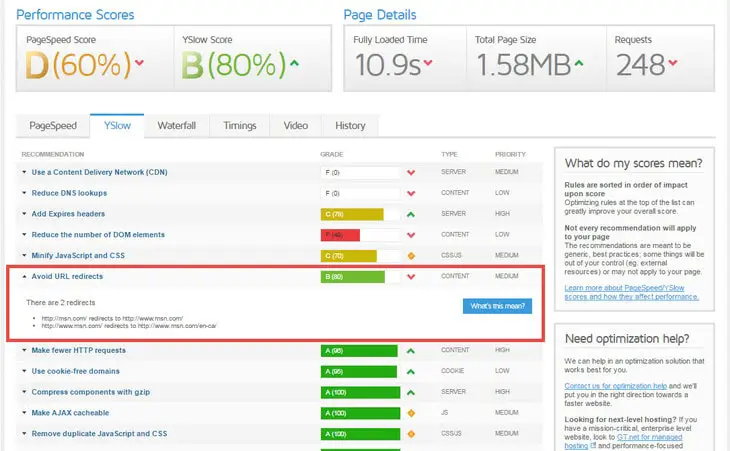What is “Redirect”?
Whenever one address changes in midway or you’ve been sent from one file to another location, a redirection happens. Redirecting in every form reduces page speed. There are two types of redirect:
- Server side
- Client side
Server Side Redirection
Two well known server side redirects are 301 and 302. 301 direction is permanent and says to search engines to index new address and forget about previous one (no guaranty). 302 redirect is temporary and might be undone in future. There are other types of 30x redirects but 301 and 302 are most used ones and 301 is the most reliable one for sure.
These redirects are done by server and are usually faster than client side redirection but still have bad effect on page load speed. Actually server is determinant here, it could be very slow it could be acceptably fast, but avoiding server redirection is the best practice.
One of most famous server redirects is non-WWW to WWW address redirection. Removing this redirection may cause some serious problems and it’s recommended to keep it (however there are reasons some websites use non-WWW address). Of course eliminating it causes confusion for many users. Sometimes it goes further and create a chain of redirects; website.com to www.website.com finally to https://www.website.com. In this case, website.com should goes directly to https://www.website.com.
Server side redirection is cachable and this let the browser to take care of them faster.
Client Side Redirection
We’ve all been there clicking on a link and the link address changed one or even several times in address bar or a new page loads immediately after that the first page loaded. This type of redirection causes several problems other than reducing page speed; browser back button doesn’t work because as soon as going back, it forces forward again.
Redirection by JavaScript can increase the waiting time even more than the others, so should be avoided or used with caution.
Also client side redirection is not recognized by search spiders and they not follow the redirection path, this impairing SEO.
One Usual Example of Redirects
Probably it happened to you opened a link and takes seconds or minutes to load page contents from different domains. One famous examples, is some advertising platforms. When your page send a request to them, several redirects take place to finally reach to the demanded file. Of course these redirects could be server side or client side but the point is their bad effects on page fully loading time.
Specially for visitors with limited resources, for example weak connection or weak hardware, redirection is too annoying.
Advertisement redirects is one of repeating problems of our clients. Beside that, sometimes these advertising platforms send unbelievably large number of HTTP requests. Mixing of these, bring us to say that, select your Ad platform wisely and do not trust 100% on even their famous ones. So you may ask what should I do if they slowed down my page? The answer is: reduce number of them or just accept it. It’s the way they work!
How to Find Redirects
If you are not sure about your website redirects, check it with online tools like GTmetrix to find out how many redirects your page have and what their paths are.
Redirecting reasons could be non-WWW to WWW domain redirect, Ad platform redirects, redirection plugins for your pages and also your custom redirects. Eliminate non-necessary ones if it’s posible.
Rare things could happen; you have a code (for whatever reason) eliminates WWW from your file addresses or you migrated recently from non-WWW to WWW address, now every request on your page should be redirected once to new address with WWW.
What should I do With Redirects?
Some of them are necessary like non-WWW to WWW.
Some of them are created by you for a reason. For example you changed the permalink structure of your website and now you want to transfer the credit of former links to new links. Now you have to use 301 redirect.
Probably the most important group of redirects are those made by Ads and contents loading from external resources (like iframes). They may cause tenth redirects. Revising your Ads and external loading content is fully on your choice.
Never underestimate the impairing effect redirects have on your page loading speed. Eliminate them or at least minimize them to the lowest possible number.

